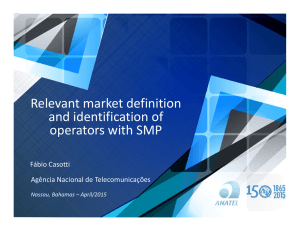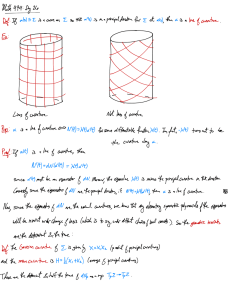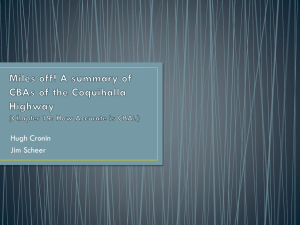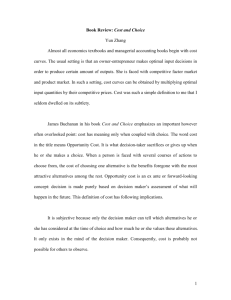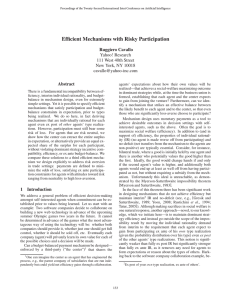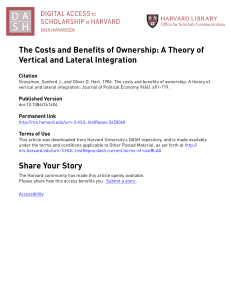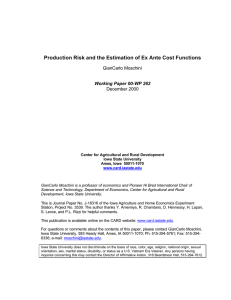Session 1: Competition approach to regulating the ICT sector
advertisement
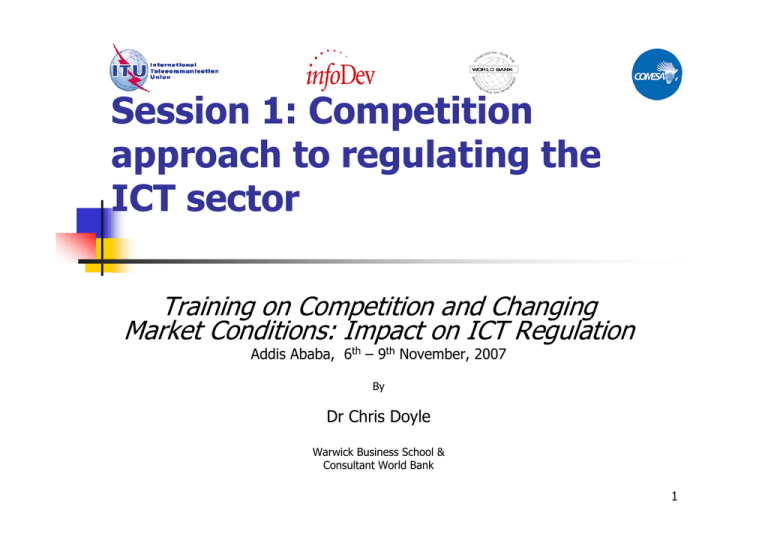
Session 1: Competition approach to regulating the ICT sector Training on Competition and Changing Market Conditions: Impact on ICT Regulation Addis Ababa, 6th – 9th November, 2007 By Dr Chris Doyle Warwick Business School & Consultant World Bank 1 From monopoly towards ex ante regulation 2 Traditional approach…highly prescriptive Traditional ICT regulation tends to be very prescriptive Regulation seeks to apply rules to steer sector towards socially desirable outcomes Forms of regulation: Economic e.g. prices Legal e.g. licensing Operational e.g. technical 3 Traditional approach…Economic regulation examples Access regulation Retail price regulation Access to facilities of incumbent (or dominant) on a non-discriminatory basis on a cost basis Prices for some services may be subject to some form of price control (e.g. price cap) Universal service/access Managing cross-subsidies or specific Universal Access funds 4 Traditional approach…methods Work out rules Apply rules Best practice: public consultation, transparency, right of appeals, regulatory impact assessments Work closely with stakeholders (e.g. incumbent, alternative providers, end users) Monitor compliance Collect data, review market developments, from time to time review regulations 5 Traditional approach works when… Market structure is stable and predictable Information is readily available and verifiable Monopoly provider, stable technological developments Accounts are presented and compiled in ways which aid regulation The end objective is easily determined Optimal prices can be calculated 6 Is the traditional approach still appropriate? Market structure is stable and predictable Information is readily available and verifiable Monopoly provider most cases NO, stable technological developments NO Accounts are presented and compiled in ways which aid regulation TYPICALLY NOT The end objective is easily determined Optimal prices can be calculated CHALLENGING 7 Moving to ex ante regulation…what is it? Ex ante regulation emerged within the European Union and is founded upon competition law principles Regulator steps back, assumes NO regulation and asks: “is competition law sufficient?” to deal with possible ‘competition problems’ If the answer is NO, the regulator should determine the least burdensome (i.e. proportionate) form of remedies (i.e. regulation) 8 Ex ante regulation The application of ex ante regulation uses competition policy fundamentals: Market Definition (or ‘relevant markets’) Market Analysis Remedies (supported by regulatory impact assessment) 9 Market Reviews 10 Market review In the EU required under the Framework directive Assessing whether ex ante regulation is required If ex ante regulation is necessary, one or more undertakings (licensed operators) must have Significant Market Power (SMP) Obligations to be applied in accordance with the principle of proportionality The problem needs to be remedied by the least onerous package of obligations Regulatory Impact Assessment Assess costs and benefits of proposed obligations and reason why there is a net benefit 11 Market review organizational chart Market Review EC Guidelines, Existing Regulations, Past Reviews Market Definition: Recommendation, National Circumstances Market Analysis: Guidelines SMP/Dominance Impose Obligations No SMP/No dominance No obligations Remove obligations Regulatory Impact Assessment 12 Market review timeline 1 year or less History: Last Review Market Review Period 2-3 years Forward Looking Period Next Review 13 The process of a market review A market review is an inquiry into the economic conditions of a market Looking at the extent of effective competition Focus on market structure (e.g. number of firms in a market, relative size of firms, entry barriers, vertical linkages, etc.), conduct of firms and behaviour of customers (retail and/or wholesale) If competition problems are identified (possible or actual), ex ante regulation required Obligations need to be justified 14 Key stages of a review summary Market Definition Market Analysis Analyse the competitive conditions in the relevant market, if effective competition is absent designate one or more undertakings as having SMP SMP Decision Obligations Identify relevant markets in which to conduct analysis Determine best form of regulation to deal with identified problems Perform Regulatory Impact Assessment 15 End Session 1 16
